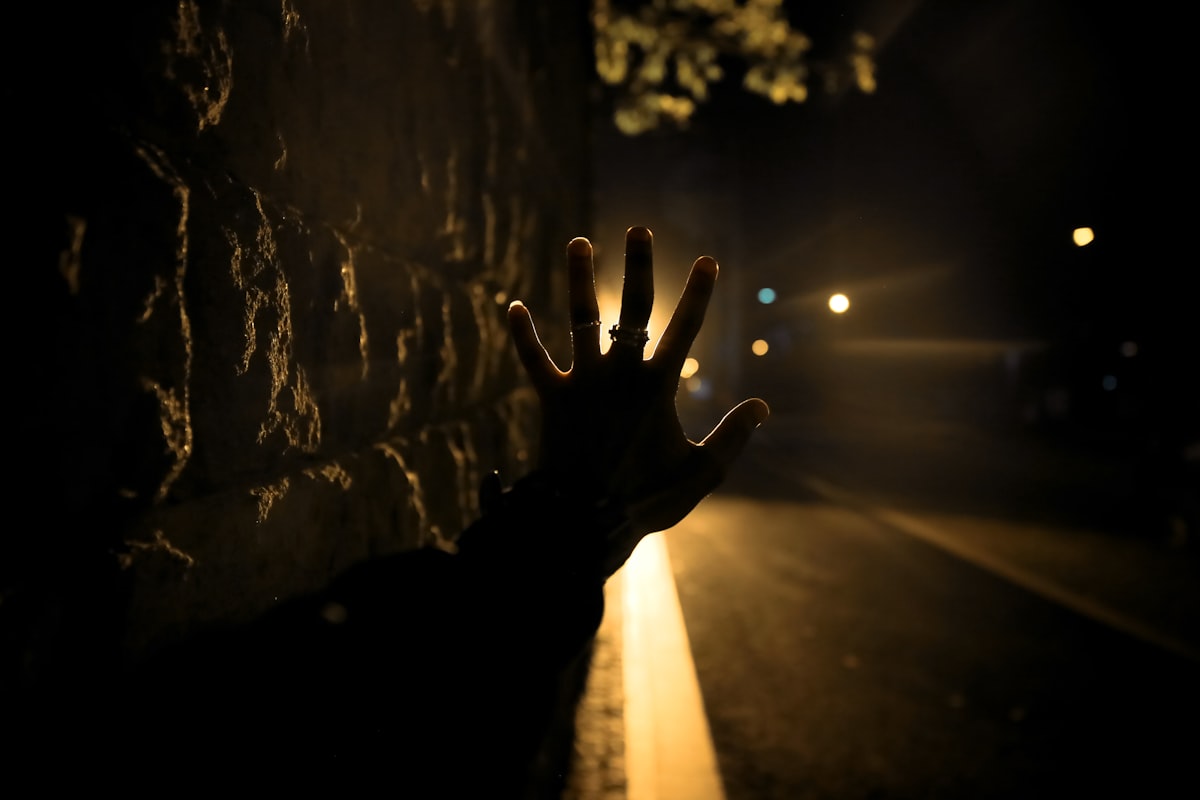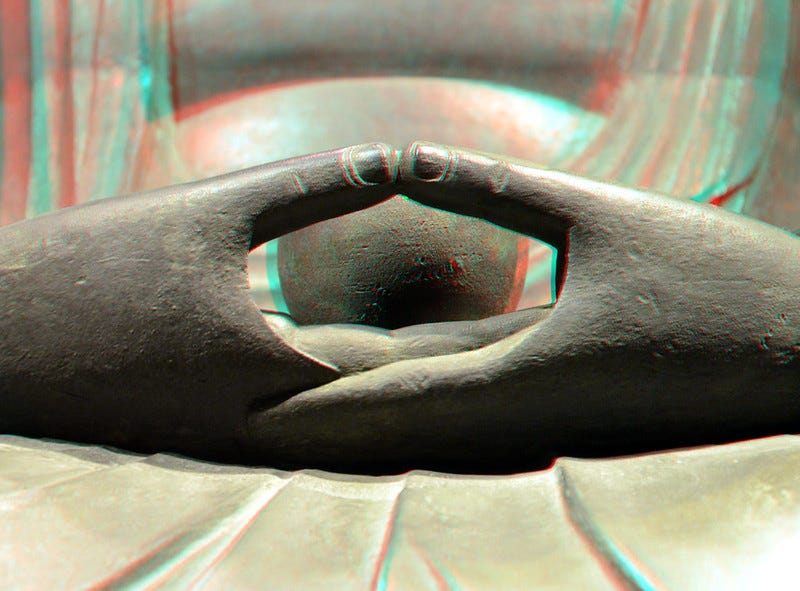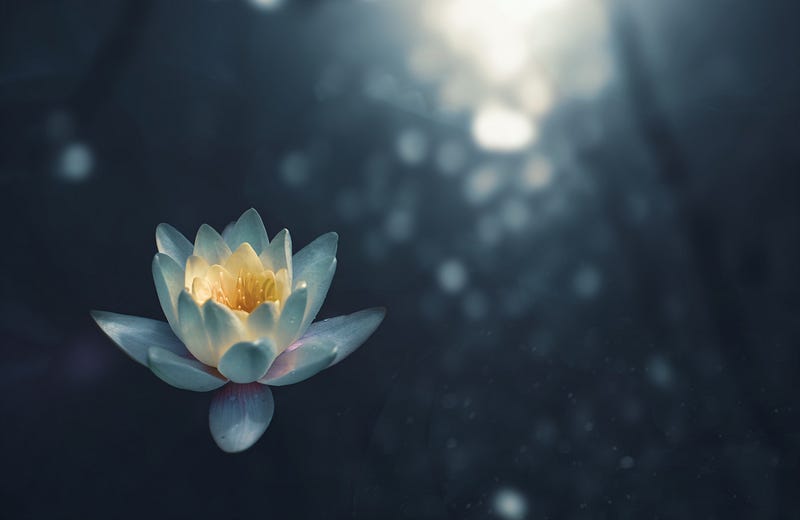Electric Thumbs
Every morning, I take the time to activate my hands. I ready them for the work of pounding the keyboard. I do this with a meditation practice I call “Electric Thumbs.”

Living a creative life requires getting in touch with your Self, the core part of you that longs to create. The Self is wired into the energy all around us and is ready to make something new and amazing. But we have to dig down and find it; then, we have to let it emerge.
One of the best ways to tap into the Self is through meditation. For many skeptics, meditation looks boring. After all, meditation is little more than sitting. But if you can’t sit and be, then you probably can’t touch that live-wire of creativity that hums below the surface of our lives.
Activate the Hands
For many of us, our creative work requires the hands. The hands provide the conduit between the brain and the material. As a writer, my hands are active on the keyboard or at my typewriter or with my pen. Sculptors, painters, architects, photographers, entrepreneurs all use their hands to practice their craft. The hands are the primary point of physical connection to our creations.
Yet, we often neglect our hands. Aside from washing up or getting that regular manicure, we don’t think too much about our hands.
If our hands are our primary connection to our most important work, then we should pay some attention to them.
So, every morning, I take the time to activate my hands. I ready them for the work of pounding the keyboard. I do this with a meditation practice I call “Electric Thumbs.”
The practice itself is quite simple. It’s a basic mindfulness practice where you identify your thumbs (or any other part of your hand) as your home, the locus of your concentration.
By the time I’ve done this for ten or fifteen minutes, my hands feel electrified, active and ready to create.
Why Thumbs?
Why did I choose the thumbs?
The practice began when I was using the dhyana mudra in my sitting practice. In this gesture, the palms rest in the lap and the thumb tips touch each other. For me, there was something electric about the connection between the thumbs, like they completed a circuit running through my whole body.

You don’t have to use the mudra. But some connection between the hands is helpful because it creates a feeling of completion. The body is a circle, completely connected, completely whole.
After using my thumbs as the locus of concentration, I found amazing things happening.
First, I began to experience my hands in a way that I hadn’t before. They became marvels to me, wonderful tools gifted to me for connecting with the world.
Second, the energy that I felt in my hands translated to the keyboard. I do much of my writing on a manual typewriter. For someone raised on computer keyboards, a manual typewriter is a workout. You don’t press keys on a typewriter, you punch them. My hands have to remain strong and active throughout the writing process.
This translates to computer keyboards too. Even though each keystroke doesn’t require as much effort, my hands still need to be active on the keyboard.
Lastly, I found that focusing on my thumbs was an easy way to stay in the meditation. Most practitioners have a home that they return to when their mind wanders. This is the practice: Refocus the concentration on the home whenever the mind goes off and does its own thing. For many, the breath provides this home. However, sometimes the breath can feel too subtle. The connection between my thumbs provides a physical sensation that, for me, is much easier to return to over and over again.
The Practice
So how do I do it? The practice has three easy phases:
- The Preparation
- The Home
- The Action
You can roll through the entire thing in ten minutes, or you can keep at it for as long as you like.
The Preparation
To get into the practice, find a comfortable spot to sit. I sit cross-legged on the couch in my writing studio. But you can do this on the floor, in a chair, wherever. Make sure, though, that you aren’t slouching or reclining. Try to use as little back support as you can while still remaining comfortable.
Put your hands in your lap. You can form the dhyana mudra as illustrated above or you can relax them. Just make sure that the tips of the thumbs touch each other. Don’t press them together. Use a very light touch.
Close your eyes and then begin with several deep breaths.
Inhale. With each inhale, imagine that a string is pulling up on the top of your skull, straightening your spine. This will help you to maintain a good posture and feel alert.
Exhale. With each exhale, allow your body to relax. We carry tension in our bodies with us all day long. The act of straightening on the inhale helps us to stay alert, but it can create more tension. We want to find a balance between alertness and tension, relaxed but aware.
With your exhales, pay attention to the following spots where we often carry our tension:
- The Brow. Smooth out your brow. Try to relax the muscles in your eyes and forehead.
- The Tongue and Jaw. Relax your jaw. Let it fall naturally rather than clenching it. Your tongue is also part of this. I often become very aware of my tongue during this part of the meditation. Take a moment to relax the tongue starting from the base. Let it rest within your relaxed jaw.
- The Shoulders. When you straighten up, you may have a tendency to bring your shoulders up into a shrug. Let them fall with your exhale. Down and back. Feel as if your shoulders are hanging from your spine, supported by your skeleton, but not in tension.
- The Hips. Focus your attention on the pelvis. Are you carrying any tension there? Can you relax all the of the muscles in this area? Give it a try!
- The Feet and Toes. Sometimes we clench up our toes or scrunch up our feet. Exhale and allow your feet to relax.
The Home
Once you’ve taken these deep breaths and you’ve relaxed your body, it’s time to move into the main event: The Home.
Bring your concentration, your full focus, to bear on the point of contact between your thumbs.
That’s it! That’s all you have to do!
Your mind will wander. You will start to think about what you said last night or that important meeting that’s coming up later in the day. You may start to think about different ideas that you could write about or work on. You may even start to feel antsy. You may feel a deep urge to get up and get to work.
Resist that urge!
With as much gentleness as you can muster, bring your concentration back to your thumbs. Each time the mind wanders, bring it back to the thumbs.
This is the practice of meditation: bringing the mind back to the home.
Do this for ten minutes or so. (NOTE: You’ll lose track of time. It’s not a bad idea to set a timer beforehand.)
As you practice, you’ll find the sensation between your thumbs grows and changes. It starts as an awareness of a part of your body that you take for granted. That awareness grows into a tingling sensation. That tingling sensation spreads throughout both hands and even to the forearms. By the time I’ve done this for ten or fifteen minutes, I can no longer distinguish between my thumbs and my hands. They become one massive ball of potential energy.
The Action
After ten or fifteen minutes, allow your concentration to relax. Give yourself a good minute or two to allow your mind to wander. Let go of the home and float along with the current of the mind.
Now it’s time to take action.
When you open your eyes, your body may feel light and your hands active and energized. Go use them immediately!
I hop up from my couch, feed a sheet of paper into the typewriter, and let it rip!
My fingers slam the keys.
My hands glide over the keyboard.
The typebars pound letters into words
into phrases
into sentences
into paragraphs
into pages.
Your mileage may vary, of course. But the act of concentrating on the part of the body most connected to your creative act will certainly help you to tap into the Self that longs to do, to make, to build, to create.
Activate your hands and activate your creativity.
Stephen Hebert is a native of Houston, Texas, and a graduate of both the University of Texas at Austin and Harvard University where he studied Religion, Classical Civilization, and Literature. By day, he teaches courses in American Literature, Writing, Short Fiction, Poetry, Philosophy, Ethics, Early Christian History, Greek, and Mysticism. By night, however, he works at his notebooks and keyboards and typewriters, creating short fiction and novels as he sips whiskey and craft beer.
